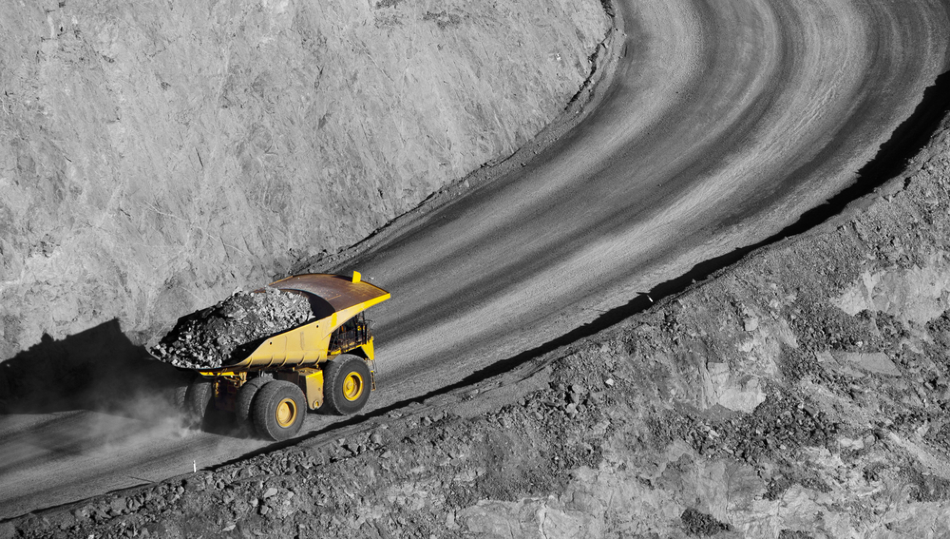Electrolysis is an appealing renewable energy technology that uses electricity to split water into hydrogen and oxygen. A recently announced corporate partnership is set to roll out an electrolysis-based fueling system for the world’s largest hydrogen-powered mining truck.

Image Credit: Jason Benz Bennee/Shutterstock.com
In 2019, Nel Hydrogen Electrolyser AS, renewable energy company ENGIE, and mining company AngloAmerican announced a joint partnership to develop the hydrogen-fueled mining truck. A prototype is expected to debut in 2020.
This venture represents the first time a truck with 300 metric ton-load capacity would be powered by hydrogen.
Mining operations typically encounter difficult conditions and require large amounts of energy. Developing a robust hydrogen-powered truck would allow mining operations to handle challenging conditions while reducing their carbon footprint, which is essential to the clean energy transition of the entire sector.
The project involves retrofitting a truck at an AngloAmerican platinum mine in South Africa with a zero-emission hydrogen fuel cell. The electricity needed for hydrolysis is expected to come partly from nearby solar power and partly from the grid.
The electrolyzer from Nel Hydrogen has a higher daily production capacity than the truck's expected daily energy demand. This will allow for the storage of excess fuel during downtimes. If the program is successful, Anglo American will convert all of its trucks at the mine and expand the program to its other mining operations.
More Sustainable Mining
Under the announced agreement, Nel Hydrogen with supply the electrolyzer for the ENGIE hydrogen fuel system that will power the AngloAmerican truck.
The adjustments to an existing truck consist of swapping the diesel tank for hydrogen tanks and exchanging the engine for a battery and hydrogen fuel cells. The electricity for the electrolysis will be supplied by a solar power installation at the South African mining location.
For the perspective of Anglo American, the initiative is part of the company's larger sustainable mining efforts. According to the official company website, a sustainable mining initiative promotes innovation and produces benefits across the entire value chain, from discovery to marketing.
Anglo American said its sustainable mining program was developed through external engagement and an analysis of the UN's Sustainable Development Goals.
Making Fuel from Water
Composed of hydrogen and oxygen, water is a very abundant fuel source. The trick is to develop a fuel-making system that is clean and economically viable.
The electrolysis of water occurs in a device known as an electrolyzer. Similar to a standard fuel cell, an electrolyzer has an anode and a cathode divided by an electrolyte. Electrolyzers can vary in size; from the size of a household appliance to large industrial-scale facilities.
The three different types of electrolyzers include:
- Polymer electrolyte membrane (PEM)
- Alkaline
- Solid oxide
What is an electrolyzer?
Video Credit: UCL Chemical Engineering/YouTube.com
Polymer Electrolyte Membrane (PEM) Electrolyzers
A polymer electrolyte membrane (PEM) electrolyzer uses a separating electrolyte made of a hard, plastic substance. At the anode, water reacts to create oxygen and hydrogen ions with a positive charge, which pass through the membrane to the cathode. There, hydrogen ions react with electrons from an external circuit to create hydrogen gas. PEM electrolyzers require temperatures ranging from 70 °C to 90 °C.
Alkaline Electrolyzers
Similarly, alkaline electrolyzers function based on the transport of hydroxide ions (OH-) across the electrolyte, with hydrogen being produced at the cathode side. Alkaline electrolyzers operate at 100°C to 150°C.
Solid Oxide Electrolyzer
In a solid oxide electrolyzer, water at the cathode reacts with electricity from an external circuit to create hydrogen and oxygen ions with a negative charge. Oxygen ions permeate a solid ceramic electrolyte to react at the anode, creating oxygen gas and electricity for the electrolyzer’s circuit.
Solid oxide electrolyzers require temperatures of 700 °C to 800 °C. Many solid oxide electrolyzers utilize waste heat from various sources, such as the production of nuclear energy.
What Source of Electricity do Electrolyzers use?
The source of electricity for the electrolyzer, including its cost, efficiency and emissions, should be looked into when looking at the advantages and viability of commercial hydrogen production by electrolysis. Electrolyzers that are powered by clean energy make for a zero-emissions fuel system.
In many areas of the world, the power grid and system are not well-suited for delivering the electricity necessary for electrolysis due to the emissions released and/or the required quantity of fuel as a result of the low system power. For these reasons, hydrogen creation by electrolysis is being tied to renewable and nuclear energy. These options have minimal emissions.
Incidentally, hydrogen creation via electrolysis is being seen as a storage solution for renewable energy systems with inconsistent power generation, such as wind and solar. For instance, the natural unpredictability of wind is an obstacle to the successful widespread adoption of wind power. If a hydrogen fuel system were to be used at a wind farm, it would better allow the power plant to match production to demand.
When the wind farm produces surplus electricity, it could be stored as hydrogen fuel. Power could then be generated from stored hydrogen fuel during times of low wind.
The latest research on electrolysis focuses on overcoming various challenges, including the high capital cost of electrolyzers, improving energy efficiency, and adding compression to increase pressure for optimal storage of hydrogen.
Read more: Zero Emission Vehicles with a Hydrogen Infrastructure
References and Further Reading
US Department of Energy. Hydrogen Production: Electrolysis. [Online] Available at: https://www.energy.gov/eere/fuelcells/hydrogen-production-electrolysis
Nel Hydrogen Electrolyser AS. Press release: Nel receives purchase order for a 3.5 MW electrolyser from ENGIE. [Online] Available at: https://mb.cision.com/Main/115/2986041/1158359.pdf
ENGIE. ENGIE and Anglo American to co-develop renewable hydrogen solution to decarbonize the mining industry. [Online] Available at: https://www.engie.com/en/journalists/press-releases/anglo-american-develop-renewable-hydrogen-solution-decarbonize-mining-industry
AngloAmerican. Our Sustainable Mining Plan. [Online] Available at: https://www.angloamerican.com/sustainability/our-sustainable-mining-plan
Disclaimer: The views expressed here are those of the author expressed in their private capacity and do not necessarily represent the views of AZoM.com Limited T/A AZoNetwork the owner and operator of this website. This disclaimer forms part of the Terms and conditions of use of this website.